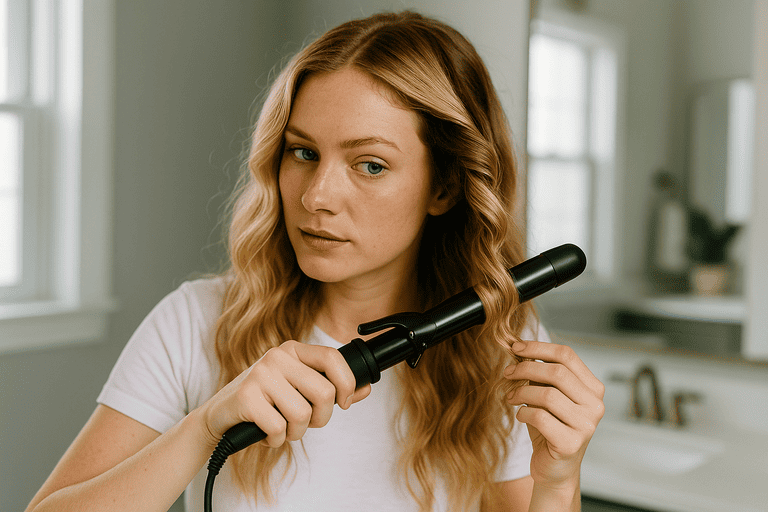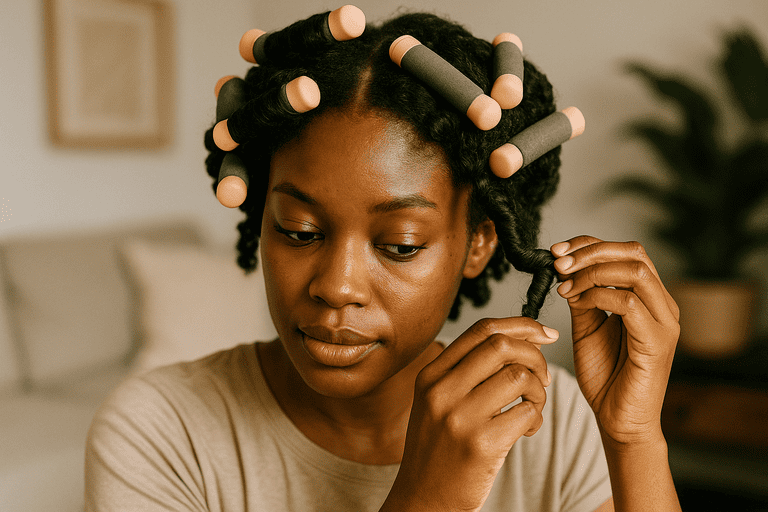If you’ve ever dreamed of touchable, bouncy waves that radiate elegance and effortlessness, then mastering how to get soft curls should be on your beauty list. Unlike tight ringlets or structured barrel curls, soft curls offer a romantic, voluminous look that flatters every face shape and hair length. Whether you’re prepping for a special occasion or simply want to elevate your everyday look, this style delivers a polished finish with natural movement.
In addition, soft curls are incredibly versatile. You can wear them loose, pin them into updos, or combine them with braids for a more whimsical effect. The key is understanding the right tools, techniques, and products—and applying them with intention. With practice and the right routine, you’ll soon be able to create this stunning hairstyle in under 30 minutes.
Tools You’ll Need to Get the Perfect Curl
Before diving into how to get soft curls, gather the right tools. Having the appropriate equipment on hand will not only simplify the process but also improve your results. Start with a curling wand or iron that has a barrel size between 1 and 1.5 inches. This size creates the ideal balance between definition and softness.
In addition to your primary heat tool, you’ll need a heat protectant spray, a wide-tooth comb, sectioning clips, and a lightweight setting spray or curl-enhancing product. For those avoiding heat, foam rollers or flexi-rods can offer a great alternative. Also, having a good detangler and a microfiber towel on hand helps reduce frizz and prep your hair for styling.
Therefore, investing in quality tools and prepping your space ahead of time ensures your styling process runs smoothly and effectively.

Prepping Your Hair for Long-Lasting Soft Curls
Creating soft curls begins long before you start curling. To successfully achieve how to get soft curls, you’ll need clean, dry hair that holds shape. Start by washing your hair with a lightweight volumizing shampoo and a moisture-rich conditioner. Once rinsed, towel-dry gently and apply a heat protectant evenly throughout the strands.
Use a round brush while blow-drying to lift the roots and create natural volume. In addition, applying a lightweight mousse or curl primer while your hair is damp can help enhance hold without stiffness. Avoid heavy creams or oils before styling, as they can weigh your hair down and prevent the curls from forming properly.
How to Make Beach Waves Without a Curling Iron
Proper prep makes a significant difference—not only in the look of your curls but also in how long they last throughout the day or night.
Sectioning and Curling Techniques for Better Control
Now it’s time to get into the technique of how to get soft curls. Begin by dividing your hair into manageable sections—typically three layers: bottom, middle, and top. Use clips to keep the sections apart and start curling from the bottom layer upward. Take 1-inch sections of hair and wrap them around your curling iron, holding each one for about 8–10 seconds.
Here’s a key tip: alternate the direction of your curls. Curl one section away from your face, and the next toward it. This creates a more natural, relaxed look. Always curl away from the face in the front sections to open up your features. After each curl, let it cool in your palm for a few seconds to set the shape before releasing it.
In addition, resist the urge to brush your curls immediately. Let them fully cool before styling to lock in the shape and preserve bounce.
Heatless Methods for Soft, Healthy Curls
If you’re looking for healthier ways to explore how to get soft curls, heatless methods are an excellent alternative. One popular technique is wrapping slightly damp hair around foam rollers or flexi-rods and letting them set overnight. In the morning, remove them carefully and use your fingers to separate and fluff the curls.
Another option is to twist your hair into two large buns or braids before sleeping. This not only avoids heat damage but also adds volume and softness. In addition, silk or satin pillowcases can enhance the results by minimizing friction and frizz while you sleep.
Heatless curling requires a bit more patience, but the payoff is healthier, shinier curls that retain bounce without the stress of high temperatures.

How to Set and Finish Curls for All-Day Hold
After curling your hair, setting the style properly is key to making it last. Once you’ve curled and cooled each section, gently run your fingers through your hair to break up the curls and create a softer, more voluminous effect. At this point, many ask again how to get soft curls without making them stiff or crunchy—and the answer lies in your finishing products.
Use a lightweight, flexible-hold hairspray or a mist designed specifically for curls. Avoid heavy gels or waxes, which can cause clumping. In addition, a light shine serum applied only to the ends can enhance smoothness without weighing down the curls.
How to Make a Perfect Ponytail: A Classic Style Reinvented
Finish with a quick flip of your hair upside down and scrunch lightly. This technique boosts volume at the root while keeping the ends defined and airy. The result is touchable, natural movement that lasts all day.
Mistakes to Avoid When Curling Your Hair
Even when you know how to get soft curls, a few common missteps can sabotage your results. First, avoid using too much product before curling. Overloaded hair becomes heavy, making curls fall flat quickly. Instead, use just enough prep product to protect and prime the hair.
Second, don’t skip heat protectant if you’re using hot tools. Skipping it can cause dryness and breakage, making future curls harder to achieve. Also, curling hair that is too damp—even slightly—can damage the hair shaft and weaken the style. Always ensure hair is fully dry before using heat.
In addition, don’t wrap too much hair around the barrel at once. Smaller sections create better definition and allow heat or shaping methods to work more effectively. By avoiding these mistakes, your curls will look cleaner, last longer, and feel healthier.
Adapting the Method to Your Hair Type
No two heads of hair are the same, and how to get soft curls depends largely on your unique hair texture. For fine or thin hair, choose a lower heat setting and work with smaller sections. Volumizing mousse or dry texturizer can help add body before styling.
For thick or coarse hair, a higher heat setting may be necessary, but only with a strong heat protectant. Divide your hair into more sections and curl smaller strands to ensure full coverage. In addition, use a stronger-hold spray to keep curls in place longer.
Curly or natural hair may not need much manipulation. Simply enhancing your natural texture with curl creams, twist-outs, or braid-outs can yield soft curls with minimal effort. Understanding your hair and choosing the right method allows for consistent, beautiful results.

Daily Maintenance and Refreshing Your Style
Once you’ve achieved the perfect curls, maintaining them over several days is easier than you think. Before bed, gather your curls into a loose pineapple (a high ponytail on top of your head) or wrap your hair in a silk scarf. This helps prevent frizz and tangling overnight.
How Do You Wear A Tie Clip for Any Occasion
In the morning, refresh your curls by misting lightly with water or a curl refresher spray. Gently scrunch to reactivate the curl shape. Avoid reapplying too much product, as it can build up and weigh down the style. In addition, try not to brush or comb through the curls after styling—your fingers are the best tool for reshaping and fluffing.
With the right nighttime routine and light touch-ups, your soft curls can last up to three days or more.
Quick Recap
Let’s wrap up this full guide on how to get soft curls with a recap of everything we’ve covered, from start to finish.
We began by discussing what makes soft curls special—their romantic, touchable texture and how they suit nearly every occasion and hair type. You learned what tools and products are most effective, including heat and heatless options. We broke down step-by-step curling techniques, preparation tips, and ways to section your hair for the best results.
From there, we explored heat-free curling options using foam rollers, twists, and braids. You saw how to set curls for long wear, and what mistakes to avoid—like applying too much product or skipping heat protection. We talked about adapting techniques to your hair type, whether it’s fine, thick, or naturally curly. Finally, you learned how to maintain and refresh curls for multiple-day wear.
Now that you know how to get soft curls, you’re ready to style your hair confidently, beautifully, and without unnecessary damage. With a little practice and the right approach, soft curls can easily become your signature look.

